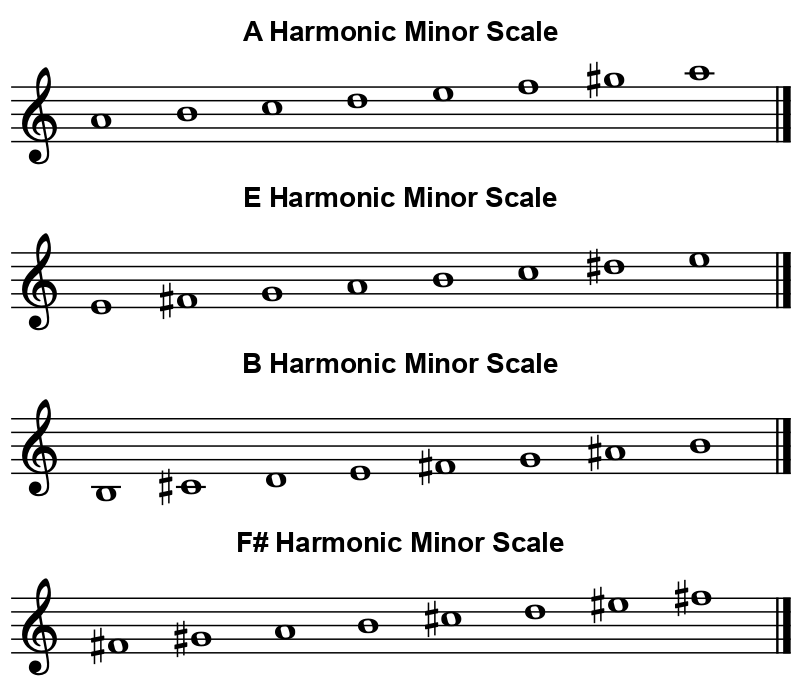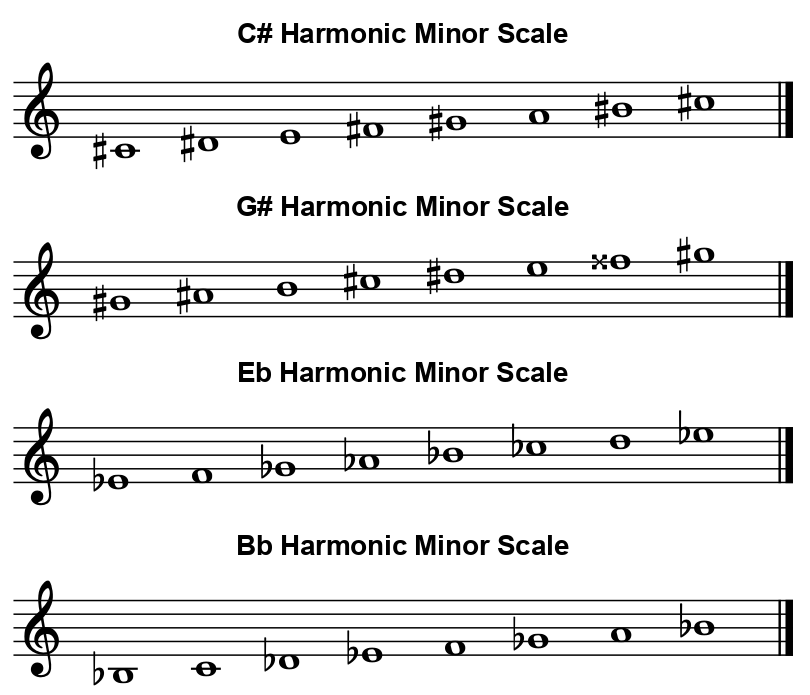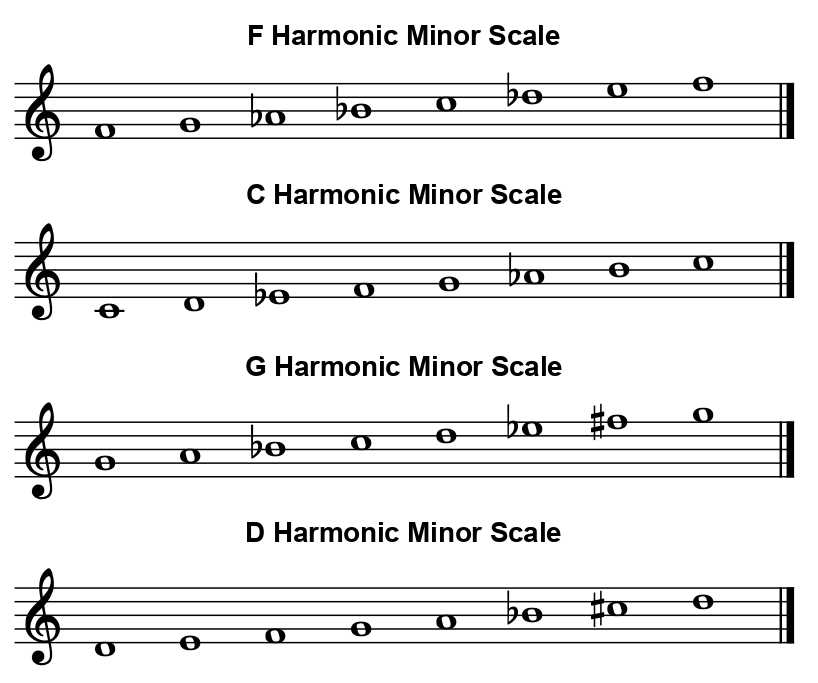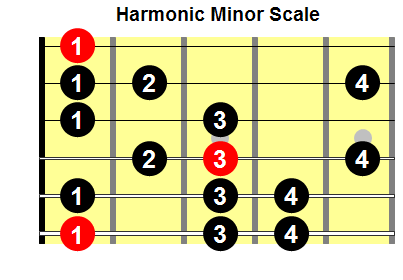The harmonic minor scale is a seven-note scale, identical to the natural minor scale but with a raised seventh scale degree.
The scale is commonly used in jazz, minor blues, classical and heavy metal music.
This post will cover how to construct a harmonic minor scale. It will also provide a common fingering for the scale, along with instruction on how to play it on a guitar in any key.
Construct a Harmonic Minor Scale: Alter a Natural Minor Scale
The difference between a natural minor scale and a harmonic minor scale with the same root note is that the seventh scale degree in the harmonic minor scale is raised a half step.
So the easiest way to construct a harmonic minor scale is by raising the seventh degree of the natural minor scale with the same root note a half step.
Construct an A Harmonic Minor Scale
To construct an A harmonic minor scale:
- Write the notes of an A natural minor scale on a staff.
- Raise the seventh note from G to G#.
Fig.1


So an A harmonic minor scale contains the notes A, B, C, D, E, F and G#.
Construct an E Harmonic Minor Scale
To construct an E harmonic minor scale:
- Write the notes of an E natural minor scale on a staff.
- Raise the seventh note from D to D#.
Fig.2


So an E harmonic minor scale contains the notes E, F#, G, A, B, C and D#.
Construct a Harmonic Minor Scale: Alter a Major Scale
We can also construct a harmonic minor scale by altering a major scale.
The scale formula for a harmonic minor scale is 1, 2, b3, 4, 5, b6, 7.
A harmonic minor scale contains the first, second, flatted third, fourth, fifth, flatted sixth and seventh degrees of the major scale with the same root note.
So we can construct a harmonic minor scale by lowering the third and sixth scale degrees of the major scale with the same root note.
Construct an A Harmonic Minor Scale
To construct an A harmonic minor scale:
- Write the notes of an A major scale on a staff.
- Lower the C# to C and the F# to F .
Fig.3


Once again an A harmonic minor scale contains the notes A, B, C, D, E, F and G#.
Construct an E Harmonic Minor Scale
To construct an E harmonic minor scale:
- Write the notes of an E major scale on a staff .
- Lower the G# to G and the C# to C.
Fig.4


Once again an E harmonic minor scale contains the notes E, F#, G, A, B, C and D#.
All 12 Harmonic Minor Scales
All 12 harmonic minor scales are shown in fig.5.
Fig.5



Scale Characteristics
The distinguishing characteristics of a harmonic minor scale are created by the raised seventh scale degree.
The raised seventh note in a harmonic minor scale:
- Pulls strongly to the tonic note a half step above it.
- Creates a minor third interval (three frets on a guitar) between the flatted sixth and seventh scale degrees.
Like the natural minor scale, the harmonic minor scale sounds dark and heavy, but more dramatic, with an Egyptian quality to it.
Harmonic Minor Scales on a Guitar
A common fingering for a harmonic minor scale is shown in fig.6.
Fig.6

This fingering will allow you to play a harmonic minor scale starting on any note:
- To play an A harmonic minor scale, start the pattern on the A on the sixth string, fifth fret (fig.7a)
- To play an E harmonic minor scale, start the pattern on the E on the sixth string, 12th fret (fig.7b).
Fig.7

Related Posts
Related posts include:
